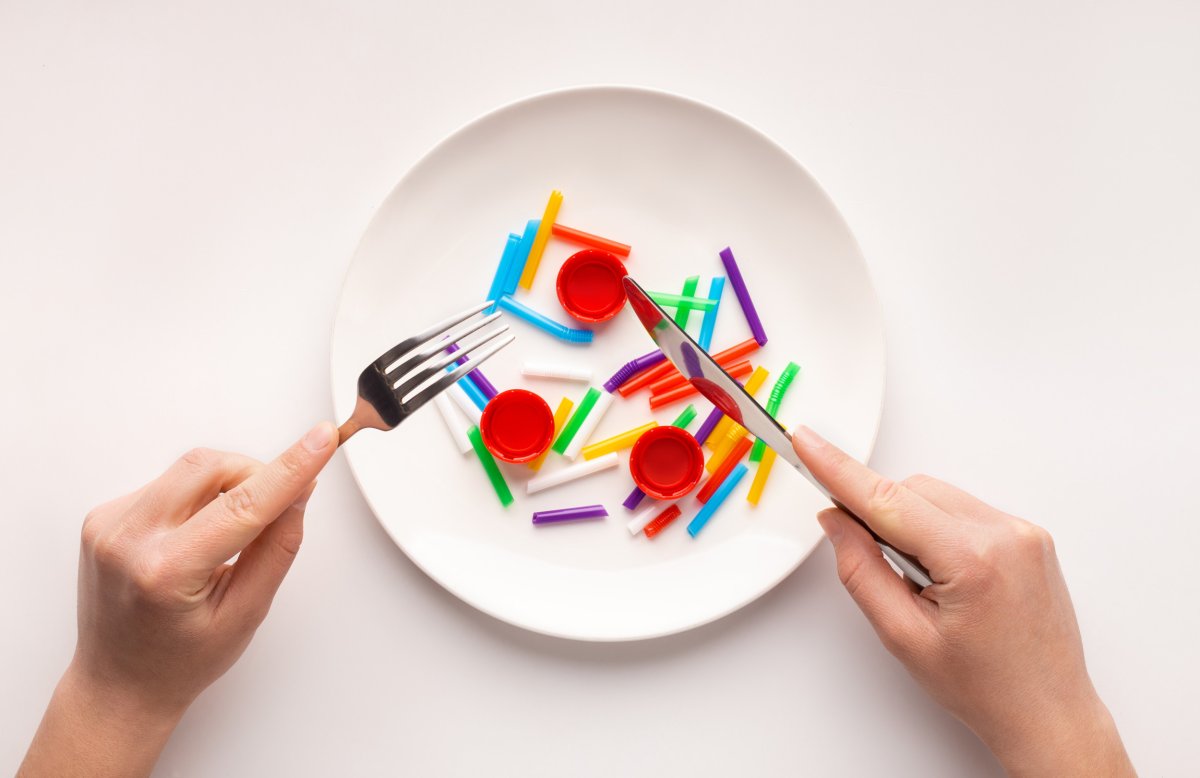-
Israel’s military will expand operations and seize ‘large areas’ of Gaza, defense minister says - 10 mins ago
-
Google’s new AI tech may know when your house will burn down - 18 mins ago
-
Utility Cost Reduction Scheme Lands Hungary on Top of Statistics - 26 mins ago
-
For the first time in 25 years, California has a snowpack trifecta - 30 mins ago
-
Tornado Map Shows Counties Facing ‘Intense’ Storm Risk - 31 mins ago
-
Pirates vs Rays Highlights | MLB on FOX - 33 mins ago
-
60s teen idol Bobby Sherman is ‘terminally ill’ wife confirms - 39 mins ago
-
After Trump interest, Denmark’s prime minister to visit Greenland - 59 mins ago
-
Foreign Minister Accuses EU Commission of Failing Tariff Policy - about 1 hour ago
-
Deficit close to 5 percent in 2024 - about 1 hour ago
Gen Z Man Left ‘Shocked’ by Plastic Levels in His Body
The phrase “you are what you eat” has never been more relevant—and it also extends to where your food is stored. With increasing studies shedding light on the concerns surrounding plastic consumption, it’s becoming clear that we can’t avoid the material, no matter how hard we try.
Take Aidan Charron, the associate director at Global Earth Day, a nonprofit organization that mobilizes people worldwide to protect the planet. This includes researching the health risks associated with plastic and educating the public on how to move away from it.
Using his expertise, Charron has made numerous changes to reduce his plastic use. However, when he tested his body for chemicals, the results were shocking.
“I was extremely shocked,” Charron told Newsweek, in an exclusive interview, adding: “I thought my levels would be lower than the general public because I know so much about it already and was taking precautions, but unfortunately that was not the case with bisphenols especially.”
Shocking Test Results
Aidan Charron
Bisphenols are a group of chemical compounds commonly used in manufacturing plastics and resins. These substances are found in polycarbonate plastics, epoxy resins, food and drink containers, water bottles, thermal paper (e.g. receipts), and the linings of metal cans. Two widely recognized bisphenols are Bisphenol A (BPA) and Bisphenol S (BPS).
The test results revealed that Charron’s BPS levels were 89 percent higher than most participants in the study conducted by the testing company. Of 1,768 urine samples tested, nearly all (95 percent) had levels under 4.54 micrograms. However, some individuals exhibited significantly higher levels, with the highest being 286.92 micrograms. Charron’s BPS level measured 2.4 micrograms, indicating relatively high exposure compared to most others in the group.
Lower Phthalate Levels Offer Some Relief
On the bright side, Charron’s phthalate exposure was considered low compared to the general U.S. population.
Phthalates have been associated with endocrine and reproductive issues, metabolic disorders, early puberty, endometriosis, and infertility in both men and women. Common sources of phthalate exposure include fragrances, coatings on extended-release tablets, plastic food and drink containers, and household dust.
The study measured levels of low molecular weight phthalates—typically found in toiletries. Charron’s results showed a phthalate level of 23.6 micrograms, placing him in the 23rd percentile. This means his exposure was lower than 77 percent of participants in the study and below the median of 45.41, indicating relatively low exposure within the observed range.

Prostock-Studio/iStock / Getty Images Plus
Lifestyle Adjustments to Minimize Plastic Exposure
Based in Washington, D.C., Charron shared the steps he had already taken to reduce plastic exposure:
- Ditching fast fashion by wearing only cotton and wool.
- Opting for natural materials in bedding, curtains, and other household items.
- Drinking tap water, “the United States enjoys one of the world’s most reliable and safest supplies of drinking water,” according to the U.S. Environmental Protection Agency.
- Using alternatives to plastic utensils such as wooden, bamboo, and stainless steel options.
- Avoiding microwaving food in plastic containers.
Despite these efforts, Charron’s BPS levels remained high. He attributed this primarily to his long-term use of reusable water bottles.
The Misconception of BPA-Free Labels
“I think those levels were driven by my reusable water bottles that I had been using for years,” Charron explained.
“I didn’t use single-use plastic for pollution reasons and health reasons too. I fell into the trap of thinking that BPA-free, reusable bottles were safer because that was the information I saw at the time. I now know that when something says BPA-free, that does not necessarily mean it is bisphenol-free.”
Indeed, regulating bisphenols is challenging due to “regrettable substitution,” where harmful BPA is replaced with equally hazardous alternatives like BPS, despite being labeled “BPA-free,” according to The Petrie-Flom Center for Health Law Policy, Biotechnology, and Bioethics at Harvard Law School.
Charron also suspects food packaging as a contributing factor.
Household Practices That May Have Helped
“I like to think that the lower phthalates levels has something to do with better household water quality,” Charron said, noting that he lives in the metropolitan D.C. area, which benefits from a well-maintained water filtration system.
Charron avoids drinks in plastic bottles or aluminum cans. He also steers clear of heavily scented toiletries.
“I favor good old-fashioned bar soap, and that might have played a part as toiletries can often contain phthalates,” he shared. “Using soap probably helped to minimize my exposure, and I am continuing to do that now.”
Is there a health issue that’s worrying you? Let us know via health@newsweek.com. We can ask experts for advice, and your story could be featured on Newsweek.
Source link































